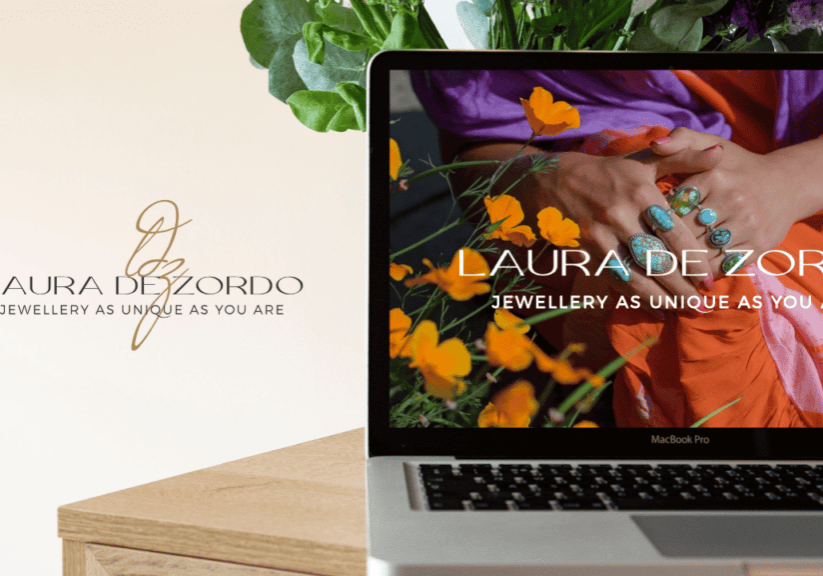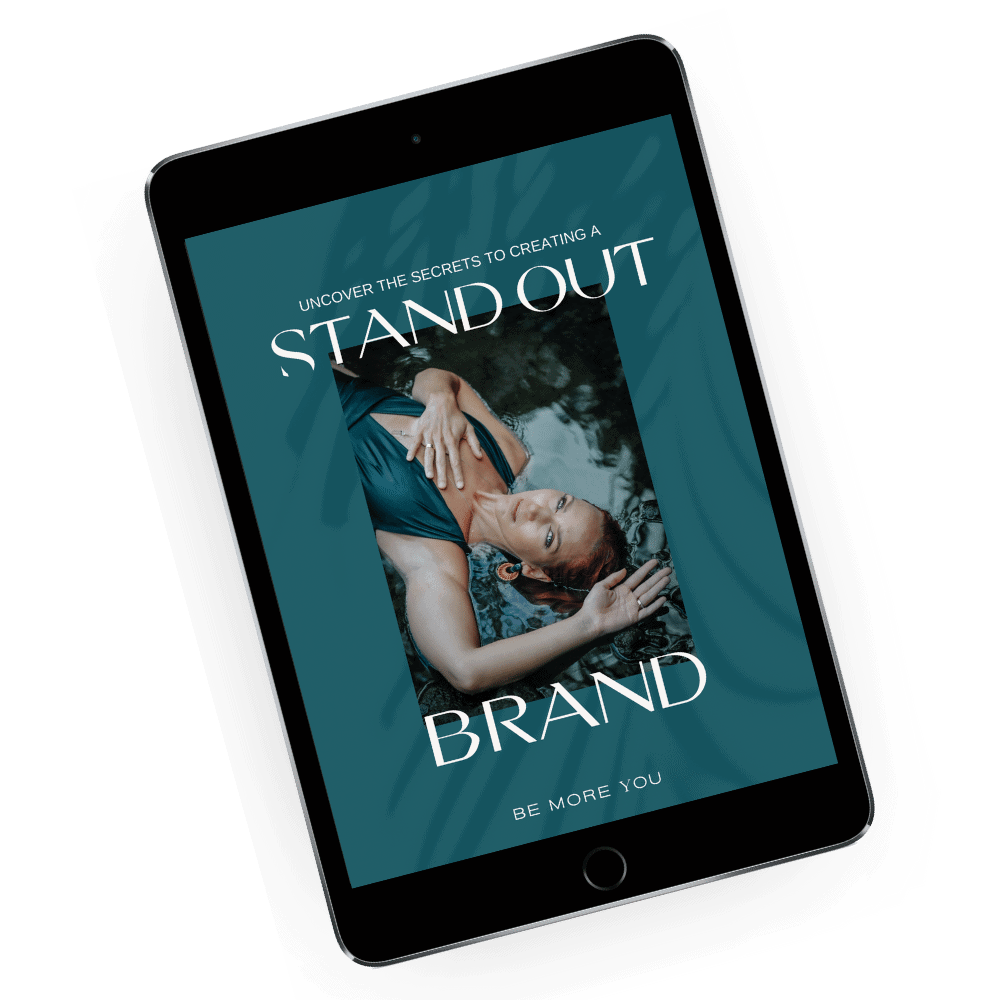
BE MORE YOU | BRAND STRATEGIST, DESIGNER & SEO EXPERT
The first thing most business owners think about when they start a business, launch a new service or course is getting a logo designed.
I understand the enthusiasm to get started and get your name out there but designing a logo before you create your brand is like putting the cart before the horse. It won’t get you where you want to go and it won’t end well.
Let’s be clear. Your brand is not your logo. To the uninitiated, the two terms seem to be synonymous, so as a brand designer and strategist I hope to bust this common myth and misunderstanding and show you why you need more than just a logo for your business.
Brand Vs logo – you need more than just a logo for your business
Your brand is the driving force behind your business, the embodiment of everything you do and what you stand for. A logo is a trademark that you use to visually represent your brand. Without a brand a logo is meaningless
Your brand is the sum total of everything your business is, what it stands for, the value you bring and how it is perceived by the world.
Elizabeth Talerman of Nucleus Brand consultancy says “Inside every organization is a driving force, a sense of purpose.
This force is your brand it’s what you stand for.
It’s what sets you apart.
It’s not a slogan or an ad campaign. It’s a living thing.
The net result of behaviour.”
Your brand is a living, breathing entity that must be crafted intentionally, infused with your energy, nurtured and cultivated over time.
One of the biggest differences between a brand and a logo is the time and investment each involves.
It’s tempting to go out and get a logo designed or DIY your own because these days anyone with a Canva account can create a fairly passable logo in a few minutes.
In fact, you could head over to Fivver right now and get a logo for a few dollars. Job done. Or not…
A brand, on the other hand, is not something you can create in half an hour, your investment in terms of time, effort and cost is likely to be far higher than designing a logo, and with good reason.
Whilst it’s true that you will probably need a logo for your business, what you actually need is a brand, and that’s not something you can buy off the shelf, it’s something that must be understood, translated and crafted.
First things first, before you can understand the difference between your brand and a logo, and why you need the former before you can have the latter, you need to understand exactly what each of them is and how they function:
Your brand should be a standalone entity and speak for itself. Your logo relies on the brand. Without a brand for it to represent, your logo becomes meaningless marks on a page.
Whilst your logo and other elements of the visual identity of your brand are handy ways to ensure consistency across your marketing and business, your business should be recognisable without it.
So, What is a brand?
Your brand is not a tangible item or a single thing, it’s an idea, a feeling, an experience.
Your brand is how people experience your business, it encompasses the essence of who you are, what you do and what you stand for.
Your brand is how people think about and more importantly, feel about your business.
Notably, as Marty Neumeier, author of The Brand Gap so eloquently put it “your brand is not what you say it is. It’s what they say it is”.
Since your brand is effected and decided by other people’s opinions of your business, it’s essential that every facet of your brand is crafted with real intention…
Your brand is multifaceted, made up of your:
- Vision
- Mission
- Story & Your Why
- Values
- Beliefs
- Promise
- Ideal customer
- Visual identity
- Logo, colours, fonts
- Messaging
- Brand tone of voice
- Brand personality
- Design Aesthetic
- Experience
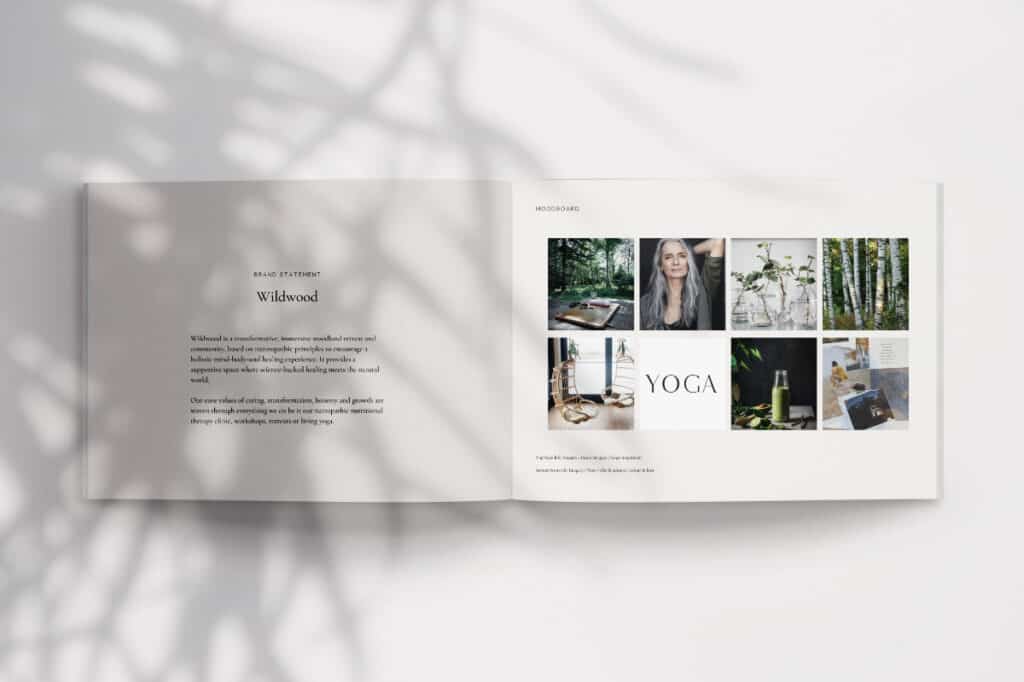
The idea that your brand conveys is your past, future and present all wrapped up into one.
With a solid brand forming the foundation of your business. It can act as a compass for every decision you make, from images through to design, what services and packages you offer, pricing, messaging, hiring and beyond. This is known as brand consistency.
You might have noticed that your logo is on that list but is a smaller part of your larger brand.
OK, so now you’re clear on what a brand is, let’s look at what a logo is and how it should function for your brand.
What is a logo? (hint, it’s not your brand)
Logo, from the greek phrase Logos meaning word, actually refers to a trademark made of custom-lettered type. These days the term logo is synonymous with all types of trademarks whether they’re type-based, symbols, illustration, emblem or otherwise.
Your logo is a symbol that forms part of your brand identity. It’s a mark, words, letters or graphic that you use to represent your brand. It’s one small part of the visual identity that forms your branding or brand identity.
With the rise of the online world and social media, brands will often require a suite or family of logos to cover all eventualities, it’s rare that one logo will suffice.
You’ll often find a brand has some combination of the following:
- The main logo which incorporates the brand mark and tag line
- Alternative logos to include
- A horizontal version
- A vertical logo
- A square logo
- Sub-marks (simplified versions of the main logo)
- Icons
- Signature
- Favicon

The thing is, you won’t know what type of logo/s you’ll need until you have more clarity about your brand:
- Where will you use your logo?
- What social media platforms will you be on?
- What marketing collateral do you need? Letterheads, email footers, business cards, brochures, packaging, promotional items etc.
Is logo design a brand?
In a word, no. There are plenty of really talented graphic designers who will create you a fabulous logo, but generally, they’ll only look at one specific part of your brand identity, which can result in your brand becoming piecemeal and lacking consistency.
Most of the time a graphic designer is working off the brief that you give them. They may do some customer research or look at your competitors, but some won’t and you’ll end up with a design that lacks substance or direction and it certainly won’t feel aligned to your business.
If you’re buying a design based on current trends (hello Etsy), you might love it now, but you’ll end up fading into the background along with all of the other non-descript brands out there that don’t stand for anything and will date quickly.
Logo vs Brand identity
Your brand identity encompasses all of the visible elements of your brand.
It includes your logo, but it also includes your
- Colour palette
- Fonts
- Icons
- Illustrations
- Patterns
- Photography and photographic style
- Graphic design etc

Your brand identity includes all the visual elements that help distinguish your brand in your customer’s mind.
Your logo is just one part of your brand identity.
Does my brand need a logo?
No, not necessarily. Your brand should speak for itself. Look at (dare I say it) McDonalds, one of the world’s most iconic brands, take away the golden arches and there are still plenty of clues that would give you a clue of where you were…
Think about
- The colours
- The menu
- The decor
- The location
- The smells
- The way you order your food
- The cheery efficiency, with which you’re greeted
- The uniform the staff are wearing
- The shape of the charity boxes at the tills
- The predictability of the phrase “would you like fries with that?”
- And can I get you anything else today?
- The way your food arrives, on a tray wrapped in paper or in a brown paper bag
- The absolute uniformity in the way your food is cooked, the size of your burger, portion of fries, drink etc
- The speed at which your food arrives
The McDonald’s brand is successful for a reason and it’s not down to their iconic logo.
They have absolute clarity about who they are, what they do and who they serve. What is clear from the example of McDonald’s is that there’s a lot more thought and effort that goes into creating a brand than simply creating an impactful logo.
There are plenty of brands without iconic logos that do incredibly well, but these brand focus heavily on their brand experience and have incredible clarity about who they are.
That said, if you’re building a cohesive brand then you’ll want a logo that accurately reflects and represents your brand. Your logo serves as a powerful reminder to people of all of the things your brand stands for.
Building a brand
Since your brand forms the foundations of your business, it’s essential that your brand itself is built on solid foundations and with clarity around these critical areas:
- What is your brand? (and more importantly what isn’t it)
- Why you do what you do?
- What is your brand mission?
- What is your vision
- What brand values
- What are your strengths?
- What is your unique promise (your brand magic)
- Who do you serve and
- How do you want to be seen in the world
- How do you want to make people feel?
Your answers to these questions will provide the basis for your brand’s visual identity (yes, that does include the logo) and this is why it’s pointless creating a logo before you’ve done the hard work of creating a brand.
Building a brand identity
Once you have the foundations of your brand strategy you can start to look at crafting your brand identity. Your logo will be part of the brand identity but you’ll need to choose a visual direction first, along with colours and fonts that work together.
Having an overarching sense of what you are trying to achieve is key. Brand designers will often set out the visual direction in a mood board. A brand mood board sets out the general mood and feel of a brand.
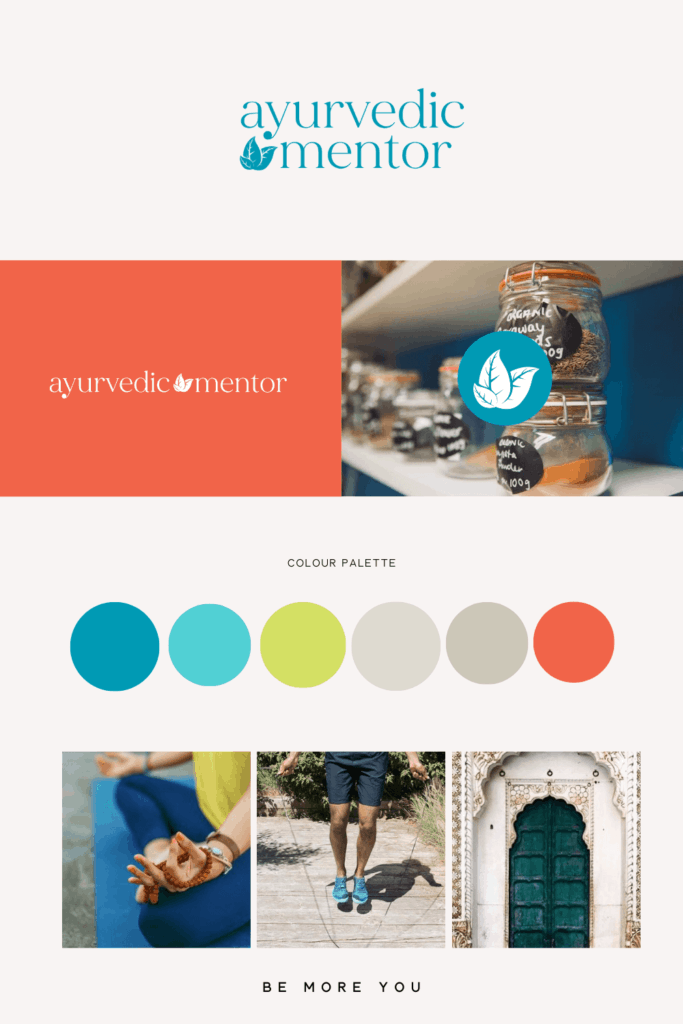
Brand mood boards and brand style boards
A brand mood board might include images that convey the energy of the brand along with brand essence words that seek to distil the brand personality into 3-5 emotions or values.
A mood board will typically have textures, colours, fonts and images included. Your mood board is the essence of your brand distilled into it’s visual representation. Your mood board or brand board gives a sense of how your brand should look and feel to reflect all of the different elements of your brand i.e. your
- Vision
- Mission
- Story & Your Why
- Values
- Beliefs
- Promise
- Ideal customer
- Visual identity
- Logo, colours, fonts
- Messaging
- Brand tone of voice
- Brand personality
- Design Aesthetic
- Experience
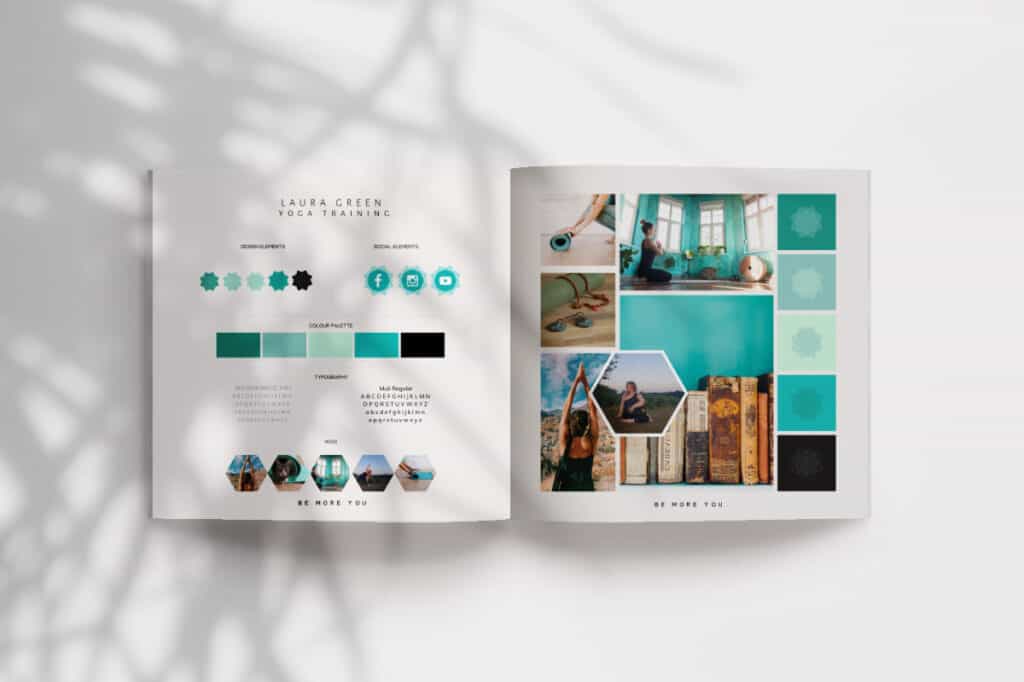
Refine your mood board until all of the elements feel harmonious with each other and make sense.
Once you have created your final moodboard you can move forward and create your logo. When you’ve got a logo that fits with the moodboard you can add them together to create a brand style board or brand style guide that includes the mood board, logo, alternative logos, icons, colour palette and fonts.
Building a brand – brand colours
Once you understand what the brand is and what it represents and know who it serves and how you want to be seen, you can then start making strategic choices about which colours to choose using colour psychology.
Colour psychology is powerful it can’t be viewed in a silo. You must look at how your message, choice of fonts, photographic style etc will sit alongside the colours that you have chosen. It’s not simply the colours that must harmonise, every element of your brand must make sense together.
Different shades of colour all carry subtly different messages, the tone and depth of your colour and the colour combinations you choose will all convey a different energy, feeling and message. It’s important to have an awareness of this in your design.
Even if you’re planning to have a black or white logo option, it’s essential to understand your brand colour palette before you design your logo, or you’ll be trying to fit your brand around your logo, when it should be the other way around.
Generally, you’ll want at least one version of your logo in your brand colours for maximum impact.
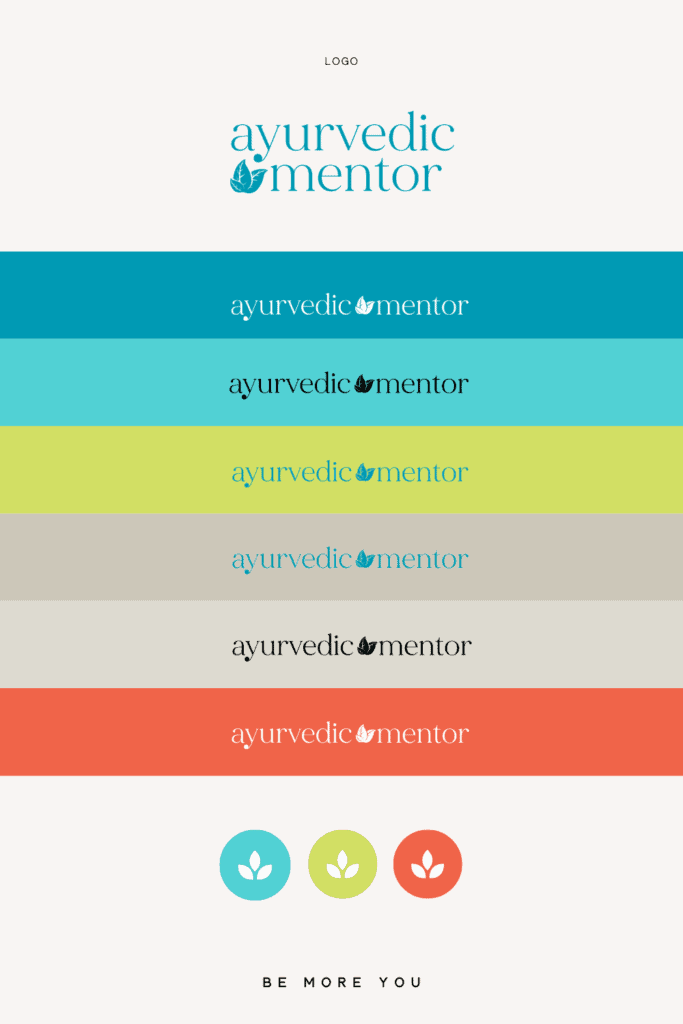
Choosing your brand fonts
Font psychology is not as widely popularised as colour psychology but fonts can have an even greater impact on your brand than the colours you choose.
Fonts have their own powerful personalities that affect how your brand is perceived. They can be seen as happy, aggressive, strong, romantic, authoritative or cheap.
Fonts can also affect
- how easy or difficult it is to read the message
- the perception of the level of reading difficulty
- The tone of your message
- How well people remember the content
Fonts have the ability to change the perception of your message. Take this simple example I like to share the same message expressed in 3 different fonts.
You can see how the tone and meaning of the message appears to change with the fonts.
Add colour into the mix and you can see how choosing the wrong font and colour combination for your brand identity can be catastrophic.
Again, once you know what fonts you’ll be using for your brand you can start designing your logo. Your logo doesn’t have to be created using your brand fonts – in fact, it’ll stand out more if it isn’t, but your logo and any fonts you choose for it, need to harmonise with the brand fonts you choose.
Brand Vs logo – it’s your choice
I hope that now you understand the difference between your brand an a logo you’ll agree that you simply can’t shortcut the process of creating a brand to create something that is supposed to represent it.
I hope that I’ve presented you with enough of a compelling argument to create your brand before you create a logo. Trust me, it’ll be worth it in the long run.
If you’d like to talk about crafting an incredible brand for your business schedule a call with me here.





